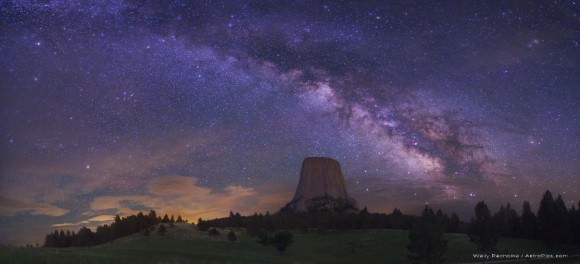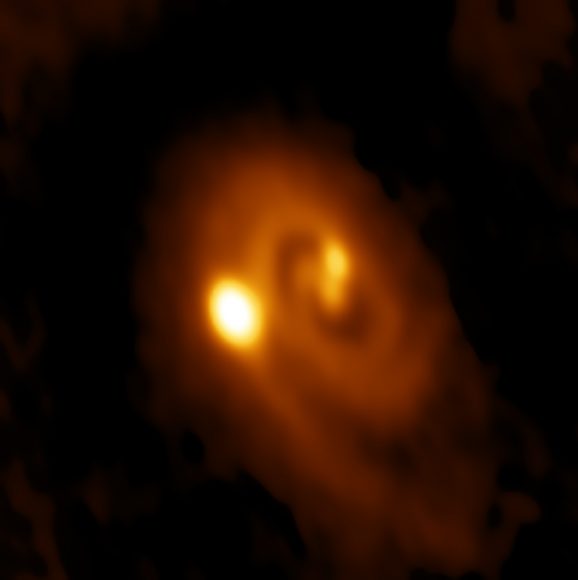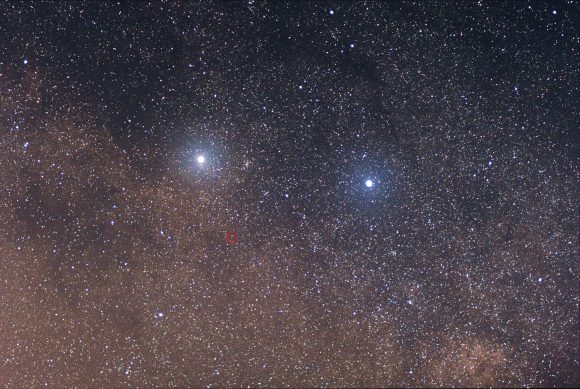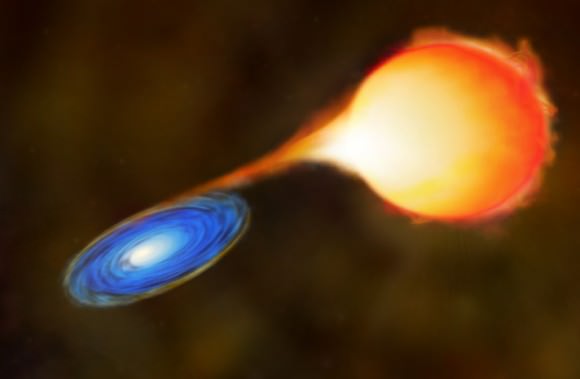When we do finally learn the full truth about our place in the galaxy, and we're invited to join the Galactic Federation of Planets, I'm sure we'll always be seen as a quaint backwater world orbiting a boring single star.
The terrifying tentacle monsters from the nightmare tentacle world will gurgle horrifying, but clearly condescending comments about how we've only got a single star in the Solar System.
The beings of pure energy will remark how only truly enlightened civilizations can come from systems with at least 6 stars, insulting not only humanity, but also the horrifying tentacle monsters, leading to another galaxy spanning conflict.
Yes, we'll always be making up for our stellar deficit in the eyes of aliens, or whatever those creepy blobs use for eyes.
What we lack in sophistication, however, we make up in volume. In our Milky Way, fully 2/3rds of star systems only have a single star. The last 1/3rd is made up of multiple star systems.

The Milky Way as seen from Devil's Tower, Wyoming. Image Credit: Wally Pacholka
We're taking binary stars, triple star systems, even exotic 7 star systems. When you mix and match different types of stars in various Odd Couple stellar apartments, the results get interesting.
Consider our own Solar System, where the Sun and planets formed together out a cloud of gas and dust. Gravity collected material into the center of the Solar System, becoming the Sun, while the rest of the disk spun up faster and faster. Eventually our star ignited its fusion furnace, blasting out the rest of the stellar nebula.
But different stellar nebulae can lead to the formation of multiple stars instead. What you get depends on the mass of the cloud, and how fast it's rotating.
Check out this amazing photograph of a multiple star system forming right now.

ALMA image of the L1448 IRS3B system, with two young stars at the center and a third distant from them. Spiral structure in the dusty disk surrounding them indicates instability in the disk, astronomers said. Credit: Bill Saxton, ALMA (ESO/NAOJ/NRAO), NRAO/AUI/NSF
In this image, you can see three stars forming together, two at the center, about 60 astronomical units away from each other (60 times the distance from the Earth to the Sun), and then a third orbiting 183 AU away.
It's estimated these stars are only 10,000 to 20,000 years old. This is one of the most amazing astronomy pictures I ever seen.
When you have two stars, that's a binary system. If the stars are similar in mass to each other, then they orbit a common point of mass, known as the barycenter. If the stars are different masses, then it can appear that one star is orbiting the other, like a planet going around a star.
When you look up in the sky, many of the single stars you see are actually binary stars, and can be resolved with a pair of binoculars or a small telescope. For example, in a good telescope, Alpha Centauri can be resolved into two equally bright stars, with the much dimmer Proxima Centauri hanging out nearby.

The two bright stars are (left) Alpha Centauri and (right) Beta Centauri. The faint red star in the center of the red circle is Proxima Centauri. Credit: Skatebiker at English Wikipedia (CC BY-SA 3.0)
You have to be careful, though, sometimes stars just happen to be beside each other in the sky, but they're not actually orbiting one another - this is known as an optical binary. It's a trap.
Astronomers find that you can then get binary stars with a third companion orbiting around them. As long as the third star is far enough away, the whole system can be stable. This is a triple star system.
You can get two sets of binary stars orbiting each other, for a quadruple star system.
In fact, you can build up these combinations of stars up. For example, the star system Nu Scorpii has 7 stars in a single system. All happily orbiting one another for eons.
If stars remained unchanging forever, then this would be the end of our story. However, as we've discussed in other articles, stars change over time, bloating up as red giants, detonating as supernovae and turning into bizarre objects, like white dwarfs, neutron stars and even black holes. And when these occur in multiple star systems, well, watch the sparks fly.
There are a nearly infinite combinations you can have here: main sequence, red giant, white dwarf, neutron star, and even black holes. I don't have time to go through all the combinations, but here are some highlights.

VFTS 352 is the hottest and most massive double star system to date where the two components are in contact and sharing material. ESO/L. Calçada
For starters, binary stars can get so close they actually touch each other. This is known as a contact binary, where the two stars actually share material back and forth. But it gets even stranger.
When a main sequence star like our Sun runs out of hydrogen fuel in its core, it expands as a red giant, before cooling and becoming a white dwarf.
When a red giant is in a binary system, the distance and evolution of its stellar companion makes all the difference.
If the two stars are close enough, the red giant can pass material over to the other star. And if the red giant is large enough, it can actually engulf its companion. Imagine our Sun, orbiting within the atmosphere of a red giant star. Needless to say, that's not healthy for any planets.
An even stranger contact binary happens when a red giant consumes a binary neutron star. This is known as a Thorne-Zytkow object. The neutron star spirals inward through the atmosphere of the red giant. When it reaches the core, it either becomes a black hole, gobbling up the red giant from within, or an even more massive neutron star. This is exceedingly rare, and only one candidate object has ever been observed.

A white dwarf accreting material from a companion star. Credit: NASA/CXC/M. Weiss
When a binary pair is a white dwarf, the dead remnant of a star like our Sun, then material can transfer to the surface of the white dwarf, causing novae explosions. And if enough material is transferred, the white dwarf explodes as a Type 1A supernova.
If you're a star that was unlucky enough to be born beside a very massive star, you can actually kicked off into space when it explodes as a supernova. In fact, there are rogue stars which such a kick, they're on an escape trajectory from the entire galaxy, never to return.
If you have two neutron stars in a binary pair, they release energy in the form of gravitational waves, which causes them to lose momentum and spiral inward. Eventually they collide, becoming a black hole, and detonating with so much energy we can see the explosions billions of light-years away - a short-period gamma ray burst.
The combinations are endless.

How Earth could look with two suns. Credit: NASA/JPL-Caltech/Univ. of Ariz.
It's amazing to think what the night sky would look like if we were born into a multiple star system. Sometimes there would be several stars in the sky, other times just one. And rarely, there would be an actual night.
How would life be different in a multiple star system? Let me know your thoughts in the comments.
In our next episode, we try to untangle this bizarre paradox. If the Universe is infinite, how did it start out as a singularity? That doesn't make any sense.
We glossed over it in this episode, but one of the most interesting effects of multiple star systems are novae, explosions of stolen material on the surface of a white dwarf star. Learn more about it in this video.










No comments:
Post a Comment